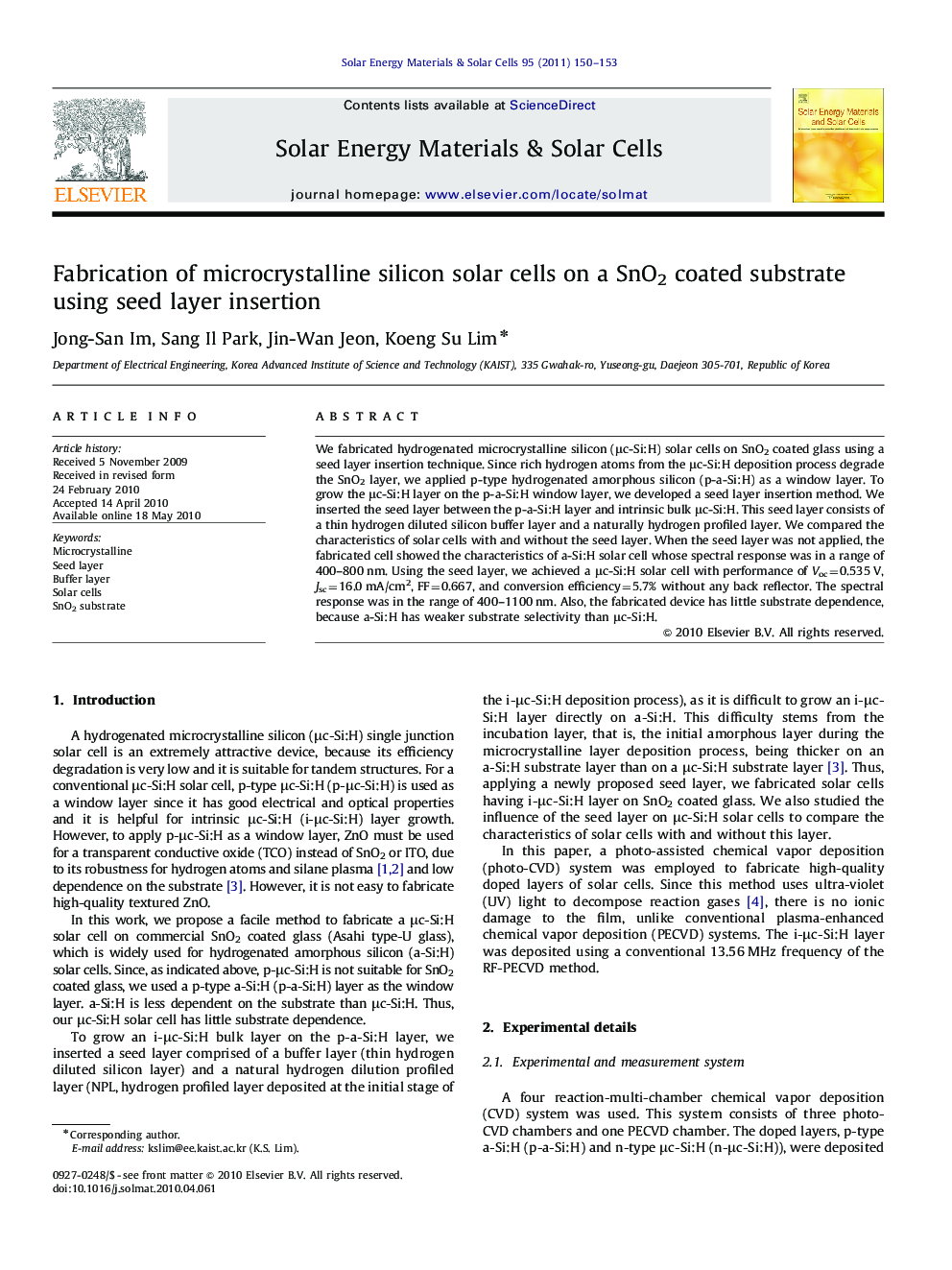| Article ID | Journal | Published Year | Pages | File Type |
|---|---|---|---|---|
| 79138 | Solar Energy Materials and Solar Cells | 2011 | 4 Pages |
We fabricated hydrogenated microcrystalline silicon (μc-Si:H) solar cells on SnO2 coated glass using a seed layer insertion technique. Since rich hydrogen atoms from the μc-Si:H deposition process degrade the SnO2 layer, we applied p-type hydrogenated amorphous silicon (p-a-Si:H) as a window layer. To grow the μc-Si:H layer on the p-a-Si:H window layer, we developed a seed layer insertion method. We inserted the seed layer between the p-a-Si:H layer and intrinsic bulk μc-Si:H. This seed layer consists of a thin hydrogen diluted silicon buffer layer and a naturally hydrogen profiled layer. We compared the characteristics of solar cells with and without the seed layer. When the seed layer was not applied, the fabricated cell showed the characteristics of a-Si:H solar cell whose spectral response was in a range of 400–800 nm. Using the seed layer, we achieved a μc-Si:H solar cell with performance of Voc=0.535 V, Jsc=16.0 mA/cm2, FF=0.667, and conversion efficiency=5.7% without any back reflector. The spectral response was in the range of 400–1100 nm. Also, the fabricated device has little substrate dependence, because a-Si:H has weaker substrate selectivity than μc-Si:H.
